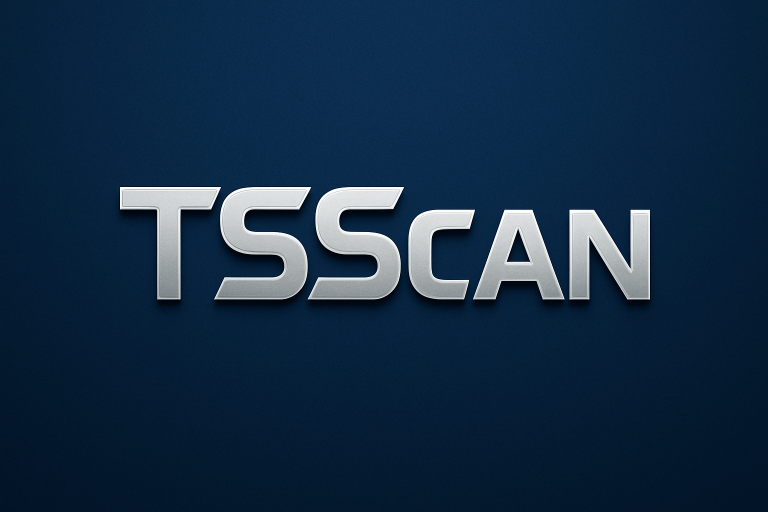PassMark PerformanceTest
System performance validation requires reliable benchmarking tools that provide consistent, comparable results across diverse hardware configurations. PassMark PerformanceTest has been my go-to comprehensive system benchmark for evaluating complete builds, diagnosing performance issues, and comparing hardware upgrades. After running thousands of benchmark sessions across everything from budget office PCs to high-end workstations, I can detail why this versatile tool remains essential despite growing competition.
Core Features and Real-World Applications
PerformanceTest 11 excels through its comprehensive approach to system benchmarking, testing every major component rather than focusing solely on graphics like many alternatives. The CPU test suite evaluates integer math, floating point, compression, encryption, physics, and single-threaded performance across 28 distinct tests. During a recent workstation deployment project, these granular results identified why certain CPUs excelling in multi-threaded workloads struggled with single-threaded legacy applications, informing purchasing decisions that spec sheets alone couldn’t guide.
The disk benchmarking capabilities provide insights beyond simple sequential speeds. Testing includes random 4K operations, database simulation, and real-world file copying scenarios. When diagnosing why SSDs performing identically in CrystalDiskMark showed vastly different application load times, PerformanceTest’s varied disk tests revealed poor random write performance on cheaper drives that sequential tests missed. This comprehensive testing prevented deploying inadequate storage in production systems.
Memory testing goes beyond bandwidth measurements to include latency and multi-threaded access patterns. Recent DDR5 testing revealed how some kits with impressive bandwidth numbers showed higher latency impacting real-world performance. The detailed memory results helped optimize BIOS settings, improving system responsiveness more than raw MHz increases suggested possible.
The 2D and 3D graphics tests might seem dated compared to gaming-focused benchmarks, but they evaluate workstation graphics performance effectively. CAD workstation testing showed integrated graphics handling 2D drafting adequately while struggling with 3D visualization – insights that gaming benchmarks wouldn’t provide. These results guided GPU allocation, saving money on systems not requiring discrete graphics.
Performance Analysis and Metrics
Result consistency across multiple runs demonstrates PerformanceTest’s reliability. Testing identical hardware typically shows less than 3% variance when controlling for temperature and background processes. This consistency enables meaningful performance tracking over time and reliable comparisons between systems. The baseline management system particularly helps identify performance degradation from driver updates or Windows patches.
The PassMark rating system aggregates component scores into overall system ratings that correlate well with real-world performance. Systems scoring 3,000-4,000 handle office tasks smoothly, 5,000-7,000 suit power users, while 10,000+ indicates high-end gaming or workstation capabilities. These ratings provide quick performance assessment, though component balance matters more than raw scores.
Benchmark completion time remains reasonable even on older hardware. A full test suite runs in 5-8 minutes on modern systems, extending to 15-20 minutes on decade-old hardware. The ability to run individual component tests enables quick targeted testing. The minimal 2-3 minute quick test provides rapid system validation during deployment.
Database comparison features transform individual results into meaningful context. Comparing against millions of submitted results reveals whether components perform as expected. Identifying CPUs running 20% below average led to discovering thermal throttling issues that clean benchmarks missed. This crowd-sourced performance validation proves invaluable for troubleshooting.
Detailed Competitor Comparison
3DMark specializes in gaming performance with beautiful graphics tests but ignores CPU, memory, and disk performance. For pure gaming system evaluation, 3DMark provides superior GPU insights. However, PerformanceTest’s comprehensive approach better evaluates overall system balance. Many builders use both – 3DMark for gaming validation, PerformanceTest for complete system assessment.
AIDA64 offers incredibly detailed system information and stress testing alongside benchmarking. The sensor monitoring and stability testing exceed PerformanceTest’s capabilities. However, AIDA64’s benchmark scores lack the comparative database that makes PerformanceTest results meaningful. AIDA64 excels at system analysis, while PerformanceTest provides better performance comparison.
UserBenchmark provides free, quick testing with easy result sharing but suffers from questionable weighting that favors Intel CPUs. The simplified interface appeals to novices, but the lack of detailed results frustrates serious users. PerformanceTest’s professional approach and unbiased testing provide more reliable results worth the modest cost.
SiSoftware Sandra matches PerformanceTest’s comprehensive testing with even more detailed benchmarks. The scientific approach appeals to engineers requiring precise measurements. However, the complex interface and overwhelming options intimidate casual users. PerformanceTest balances comprehensive testing with approachability better than Sandra’s engineering focus.
Platform-Specific Considerations
Windows support remains primary with versions from Windows 7 through Windows 11 functioning properly. The native 64-bit version properly tests modern hardware, while 32-bit legacy support enables testing older systems. ARM Windows support arrived recently, enabling Surface Pro X and similar device testing. The Windows focus provides deep system integration and reliable results.
Linux support through a separate version provides most functionality, though some tests differ from Windows versions. The Linux version proves valuable for server benchmarking and cross-platform comparison. Result compatibility between Windows and Linux versions enables meaningful performance comparison across operating systems.
macOS absence disappoints given Apple Silicon’s impressive performance claims. The lack of Mac support prevents cross-platform performance validation in mixed environments. While Boot Camp enables testing Intel Macs under Windows, native macOS testing would provide more accurate results.
Android and iOS versions offer mobile benchmarking for phones and tablets. While simplified compared to desktop versions, they provide consistent methodology across platforms. Testing revealed Apple’s GPU advantages and Snapdragon’s efficiency improvements through comparable benchmarks.
Technical Requirements and Workflow
System requirements remain minimal: any Windows 7+ system with 256MB RAM runs PerformanceTest, though testing modern hardware benefits from current OS versions. Installation requires roughly 100MB disk space. Administrator privileges enable low-level hardware access for accurate testing. The portable version runs from USB drives without installation.
Initial configuration involves minimal setup – the software automatically detects hardware and selects appropriate tests. Advanced users can customize test parameters, adjusting duration and complexity. Creating custom test suites for specific evaluation needs streamlines repetitive testing. The baseline system enables performance tracking across driver updates and hardware changes.
Result management through the included database tracks historical performance and enables comparison shopping. Saving results before hardware upgrades quantifies improvement. The export functionality creates reports for documentation or customer delivery. Integration with PassMark’s online database provides instant performance context.
Best Practices From Extensive Usage
Controlling test conditions ensures reproducible results. Closing unnecessary applications, disabling antivirus scanning, and allowing thermal stabilization prevents result variation. Running tests multiple times and averaging results improves accuracy. Morning testing before thermal buildup provides best-case scenarios, while afternoon testing reveals sustained performance.
Creating baseline profiles immediately after system build establishes performance expectations. Regular testing identifies degradation from driver issues, thermal paste aging, or hardware problems. Comparing current results against baselines revealed several systems with failing RAM causing 15-20% performance loss.
Understanding score components prevents misinterpretation. High CPU scores don’t guarantee good gaming performance without adequate GPU power. Balanced component scores indicate well-designed systems. Extreme scores in one area often indicate bottlenecks elsewhere.
Using comparative databases guides upgrade decisions. Identifying performance gaps between current and potential hardware quantifies upgrade benefits. This data-driven approach prevents wasteful upgrades providing minimal real-world improvement.
Business Value and ROI Analysis
At $29 for personal licenses and $44 for commercial use, PerformanceTest provides exceptional value for system builders and IT departments. The time saved diagnosing performance issues recovers costs within the first few uses. Site licenses at $139 for unlimited computers make enterprise deployment affordable.
For system builders, including PerformanceTest results in customer deliverables adds professionalism. Quantifying performance improvements from upgrades justifies costs to skeptical customers. The ability to demonstrate meeting performance specifications protects against disputes.
IT departments benefit from standardized performance baselines across fleet systems. Identifying underperforming units before user complaints improves satisfaction. The historical tracking enables data-driven refresh cycles based on actual performance rather than arbitrary age limits.
Who Should Use PerformanceTest
System builders and PC technicians find PerformanceTest essential for validation and troubleshooting. The comprehensive testing and comparative results streamline diagnostics. Professional builders appreciate the detailed reports for customer documentation.
IT professionals managing fleet computers benefit from standardized benchmarking. Establishing performance baselines and tracking degradation enables proactive maintenance. The reasonable licensing and deployment ease suit enterprise environments.
Enthusiasts comparing hardware and optimizing systems discover valuable insights from detailed testing. Understanding how components interact helps balanced system design. The historical database guides smart upgrade decisions.
Casual users seeking simple performance numbers might find PerformanceTest overwhelming. Free alternatives like UserBenchmark provide quicker, simpler results. The detailed analysis PerformanceTest provides exceeds most casual needs.
Final Verdict
PassMark PerformanceTest delivers comprehensive system benchmarking that balances professional capabilities with accessibility. The broad test suite evaluates complete system performance rather than focusing on single components. For anyone seriously involved in system building, maintenance, or optimization, it provides essential capabilities at reasonable cost.
Notable limitations include the dated interface design, occasional compatibility issues with bleeding-edge hardware, and the lack of native Apple Silicon support. Some graphics tests feel less relevant for modern gaming evaluation. These issues don’t significantly impact core functionality but show areas for improvement.
The continuous development with regular updates for new hardware and Windows versions demonstrates long-term commitment. The massive result database grows more valuable over time, providing unmatched comparative context. For comprehensive system benchmarking on Windows, PerformanceTest remains the gold standard.
The modest price and perpetual licensing model provide excellent value compared to subscription alternatives. While specialized tools excel in specific areas, PerformanceTest’s jack-of-all-trades approach suits most users better than multiple specialized benchmarks. For anyone needing reliable, comprehensive system performance evaluation, PerformanceTest deserves strong consideration as an essential tool.







